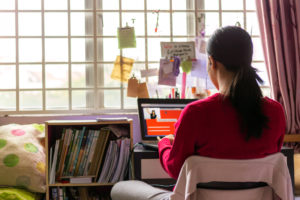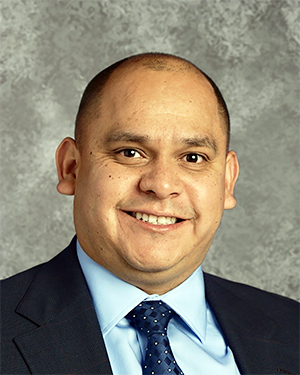As a new school year begins, it feels good to reconnect with students and meet new families in our community. As the assistant principal at Vail Academy and High School, a K–12 public school of approximately 475 students in Tucson, AZ, one of my responsibilities is to focus on onboarding new students and guiding them through a summer orientation process—a challenge that was the first project I took on when I arrived at the school. By serving our learning community, I have been fortunate to watch students that attended our orientation later walk across the graduation stage.
Connecting With Students
In our K–12 setting, we must be intentional about establishing personal connections with students to build and maintain a positive climate and culture across campus. Like others have experienced during the pandemic, it has been challenging to maintain healthy relationships with students while teaching in hybrid or remote learning environments. In some instances, we temporarily lost contact with families and were unaware of what some of our students were going through when they were not logging on and attending virtual classes.

Although we were mainly working with students in person by the start of the second semester, our initial steps in the onboarding process were done virtually and lacked the same level of impact that we were accustomed to when getting to know students. With the help of others, we launched a virtual orientation to introduce students to our school. In my opinion, it didn’t share the same feeling as meeting new students in person and establishing the same level of authentic trust, but it was necessary to help new students learn how to practice digital citizenship and help them adapt to starting the year in a remote setting. The critical part of giving campus tours and asking real-time questions was challenging to replicate through prerecorded videos and chat bar texting. Many organic opportunities were lost to learn about students’ interests and hobbies. We pushed through and tried to make it as inviting as possible despite our challenges.
New Beginnings
This year, I vowed to be engaged in all new student relationships as part of the onboarding process—and beyond it. I did not want to take for granted the simplicity of answering personalized questions or trying to ease the nervousness of a student. For us, learning their way around campus and making a few friends before day one is a necessary component of the onboarding process. According to Maslow’s hierarchy of needs, a person is more likely to move up to the higher levels of the hierarchy pyramid if they feel safe and supported while moving toward the level of self-actualization. We strive to create a safe place for students where they can develop knowledge of themselves and begin working through rigorous classes that help set them up for the future.
During the first stages of our onboarding process, we focus on helping students build relationships and learn about the culture of our school, and then begin putting technology in their hands. We set the ultimate goal of retaining students and moving them through graduation as a cohort. If we successfully keep cohorts of students together and build continuity, we believe that our students will be motivated to challenge themselves and accomplish new milestones and goals. In some cases, we have students who leave and later return to us. Our principal, Mr. Barger, affectionately refers to them as our “boomerangs.”
While onboarding new students, we determine early interventions that students may need and encourage them to get involved and connected to their school in multiple ways. Our school is small enough that we can start by introducing students to the adults on campus that they will need for support. In many cases, a student is likely to have a teacher for more than one subject or elective, so early introductions are effective and help break the ice. Staff members also play an important role in serving as club sponsors and coaches, which helps our students develop the soft skills they will need beyond graduation.
During our summer orientations, we had several newly registered students that have been out of the classroom for over a year. We tried to give them a little more individualized attention by pairing them with student ambassadors. Selecting high-character ambassadors helps make students feel comfortable and makes it possible to answer questions at a peer level. These new students seemed excited to begin their new journey at our school, and it was humbling to know that I may have been one of the first staff members that they encountered in a long time.
Shaping Positive Behavior
We strive to maintain the type of climate that makes students want to be on our campus and tell others how they’re treated by our staff. We embrace the use of Positive Behavioral Interventions and Supports (PBIS), and Vail Academy is going through a district-initiated reboot to identify and polish our best practices, including sustainable programs that showcase student goals and efforts. Some of our PBIS interventions include Dining with Dignity, Boxer Bucks, Royalty of the Day, Principal for the Day, and award assembly celebrations.
By shaping desired behaviors, we take a proactive approach toward being able to deliver quality instruction and maximize our instructional time. Our orientations are great opportunities to put this into practice by inviting student ambassadors who model the type of behavior that is expected and represent our core values and beliefs.
Connecting, Mentoring, and Inspiring
I believe that there are three levels of making a difference in students’ lives. The first starts with forming personal connections and building trust, the second is to motivate students, and the third is to inspire them. The first two were something I prided myself in doing while serving as a teacher. It wasn’t until recently that former students began reaching out to let me know the role I played in inspiring them to give their best effort at working toward their goals and aspirations.
Through those moments of gratitude, I recognized that I had become the same type of leader that inspired me to serve others. Once I made that connection, I doubled down on my efforts to make a personal connection with each student who entered our learning environment. I feel invigorated and recognize that each conversation that I have with a student is an opportunity to build a relationship and establish trust. I haven’t lost sight that some students find schools to be their safe place and look forward to working with the adults that they encounter each day. I aspire to be one of those people each day that I arrive.
I can’t overexpress how good it feels to be in the presence of students again. As we start our next school year, I will try to focus on the little things that will make our campus a better place and know that connecting with kids is going to yield the biggest return down the road. My message to others is not to lose sight of making personal connections with new students. The motivation that can be harnessed is the same energy that takes schools to the next level in academic achievement and performance. If a student is genuinely motivated by your kindness and encouragement, they will run through walls for you. It all begins with how you treat a student the first time you meet them.

